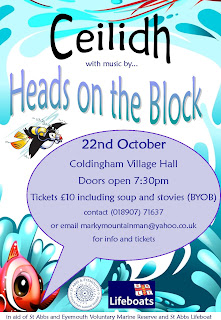
On the eve of the winter solstice it seems appropriate to give you the last update of 2011. You have probably noticed that its been quite quiet on the blog front this month. That is certainly not because nothing has been happening; just the opposite, in fact. The truth is that so much has been happening that there just hasn't been time to write anything on the blog!
Its funny, the question us Rangers get asked most often is "what do you do in the winter?". And its one that it is difficult to give a satisfactory answer to. And again, that's not because we go into hibernation, its just we do so many different things that it is difficult to give a succinct answer. So, here, for your delectation, is a precis of what I have been up to during November and December.
Firstly, there are a fair few meetings - anything from the coming together of all the Countryside and Islands staff from the south of the Trust's domain to the AGM of the Marine Reserve (at which I act as secretary). I have also been on a couple of training courses: one on recruitment and interview techniques and a chainsaw course - again, a bit of an illustration of he breadth of the role!
I have also been drawing together the final paperwork for a funding bid to the Scottish Rural Development Programme in order to bring in funds to help us manage our species rich grasslands at St Abb's Head and at the Lumsdaine Strip. I just heard this week that this has been successful, which is great news. Also on the application front, I have put together and submitted a planning application to seek permission to site a mobile home behind the Ranger's Office to house volunteers in the summer months.
Other office work has included pulling together and analysing biological data collected over the field season, writing reports, work planning and setting budgets for next year, and organising everything needed to recruit a new Seasonal Ranger for next year (as, sadly, Elaine will not be returning next year).
Then there is carrying out maintenance around the property - either doing it myself with the assistance of our volunteers, Dave and Ernie, or bringing in contractors to do the work. Over the last couple of months we have tackled jobs ranging from blocked urinals to footpath maintenance ourselves; and have had contractors in replacing a fence at Blackpotts, putting in drainage in the nature reserve car park and decorating most of our buildings inside and out.
Phew - so, I am rather looking forward to my Christmas break! Which leads me on to wishing you all a very Merry Christmas and a Prosperous New Year.
















































